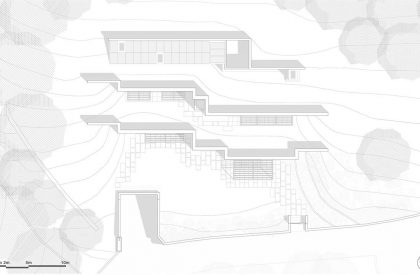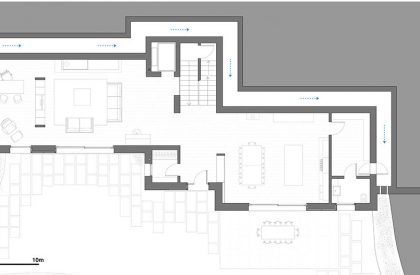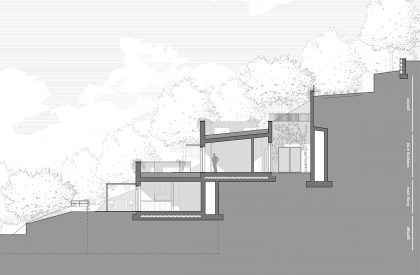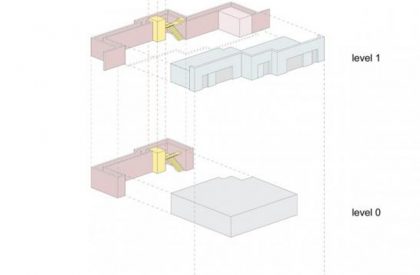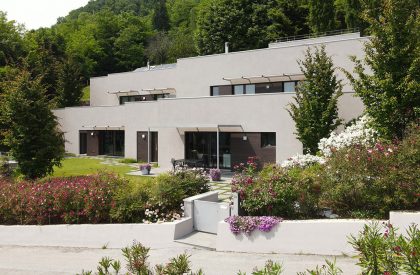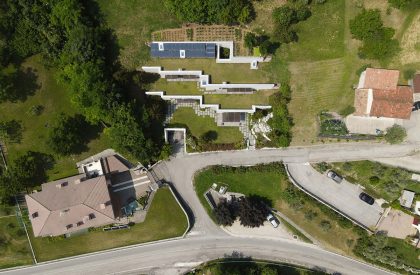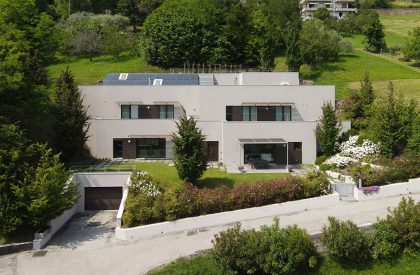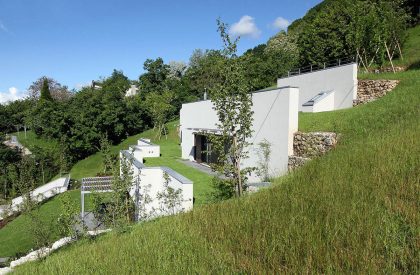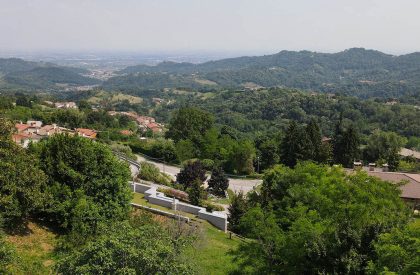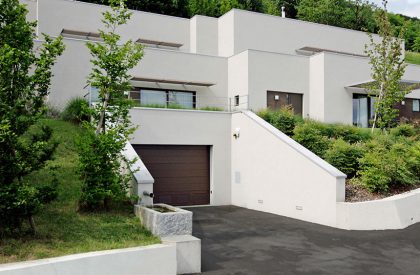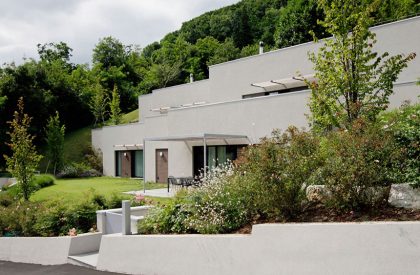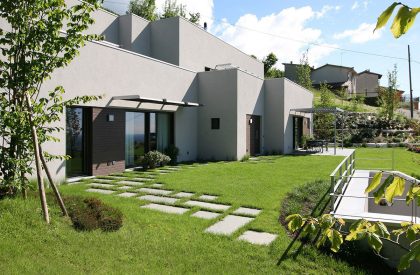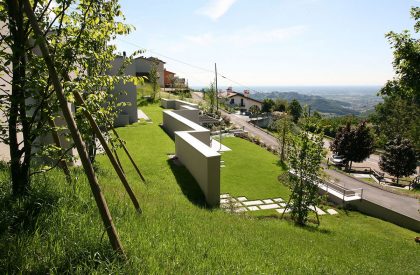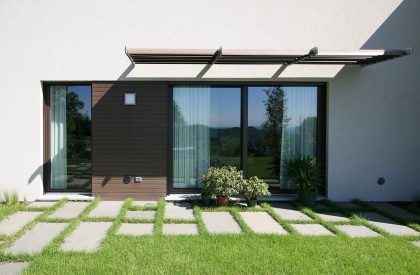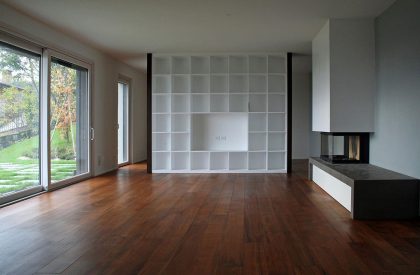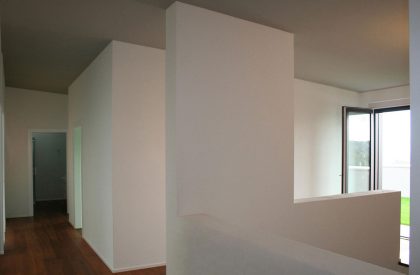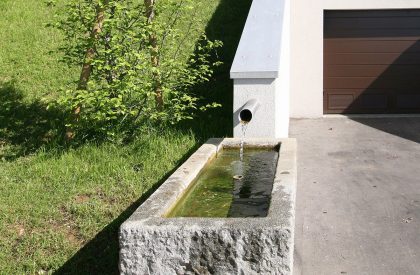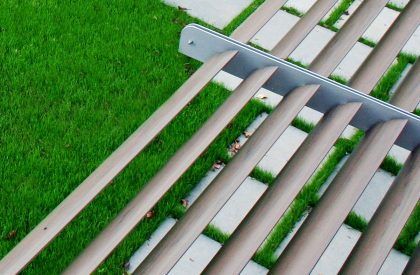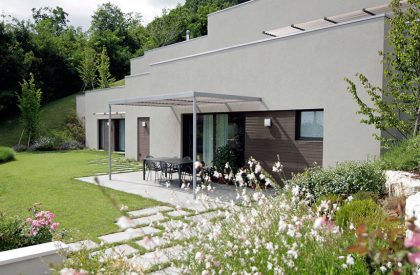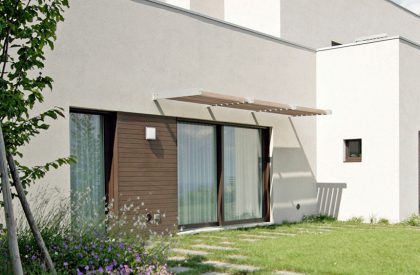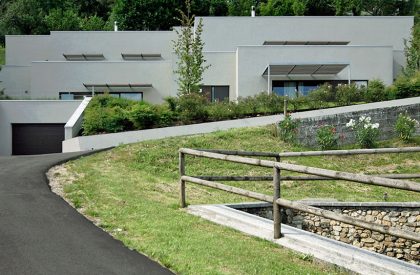Excerpt: Semi Ipogea House is a residence designed by the architectural firm Dario Scanavacca Architetto. The design theme is “Masiera,” typical local drywall reinterpreted to give life to the livable wall concept. The different levels on which the building has been built allow for the natural creation of green terraces of land in a system in which the coverage of each plane becomes the garden of the upper terrace. This is allowed by the position of three levels, shifted relative to one another, and allows the family to use open, livable spaces despite the strong inclination of the ground (45 °).
Project Description
[Text as submitted by Architect] The building project is located on the border of the “Valley of Giaroni” that lies under the road of Ramestòn in the municipality of Marostica, north-eastern Italy. The concept is designed to achieve a low environmental impact by being recessed, semi-underground, and close to the hill.


The design theme is “Masiera,” typical local drywall reinterpreted to give life to the livable wall concept. The different levels on which the building has been built allow for the natural creation of green terraces of land in a system in which the coverage of each plane becomes the garden of the upper terrace. This is allowed by the position of three levels, shifted relative to one another, and allows the family to use open, livable spaces despite the strong inclination of the ground (45 °).

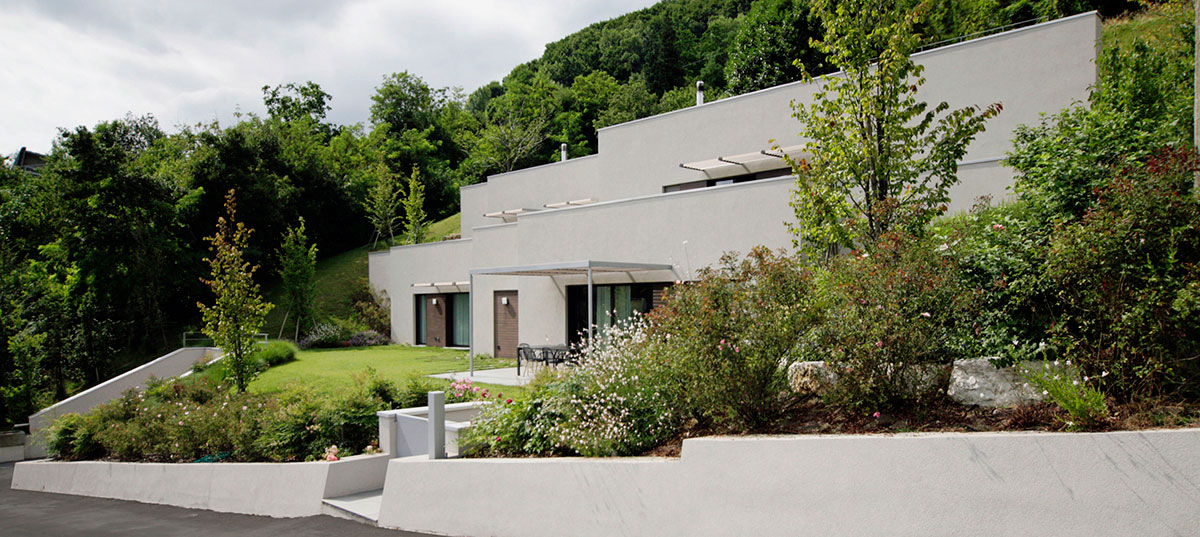

The green roof also increases the absorption and permeability of rainwater. It guarantees the lowering of the internal temperature of the building by increasing the thermal gap. Due to this, it adds a southern exposure to the building, which reduces, with respect to a normal house exposed on all four sides, the quantity of heat absorbed in the warmer months and maintains a constant temperature of the walls built against the hill; during all months of the year, so you get a thermal balance of the building more homogeneous, exploiting the peculiar composition.


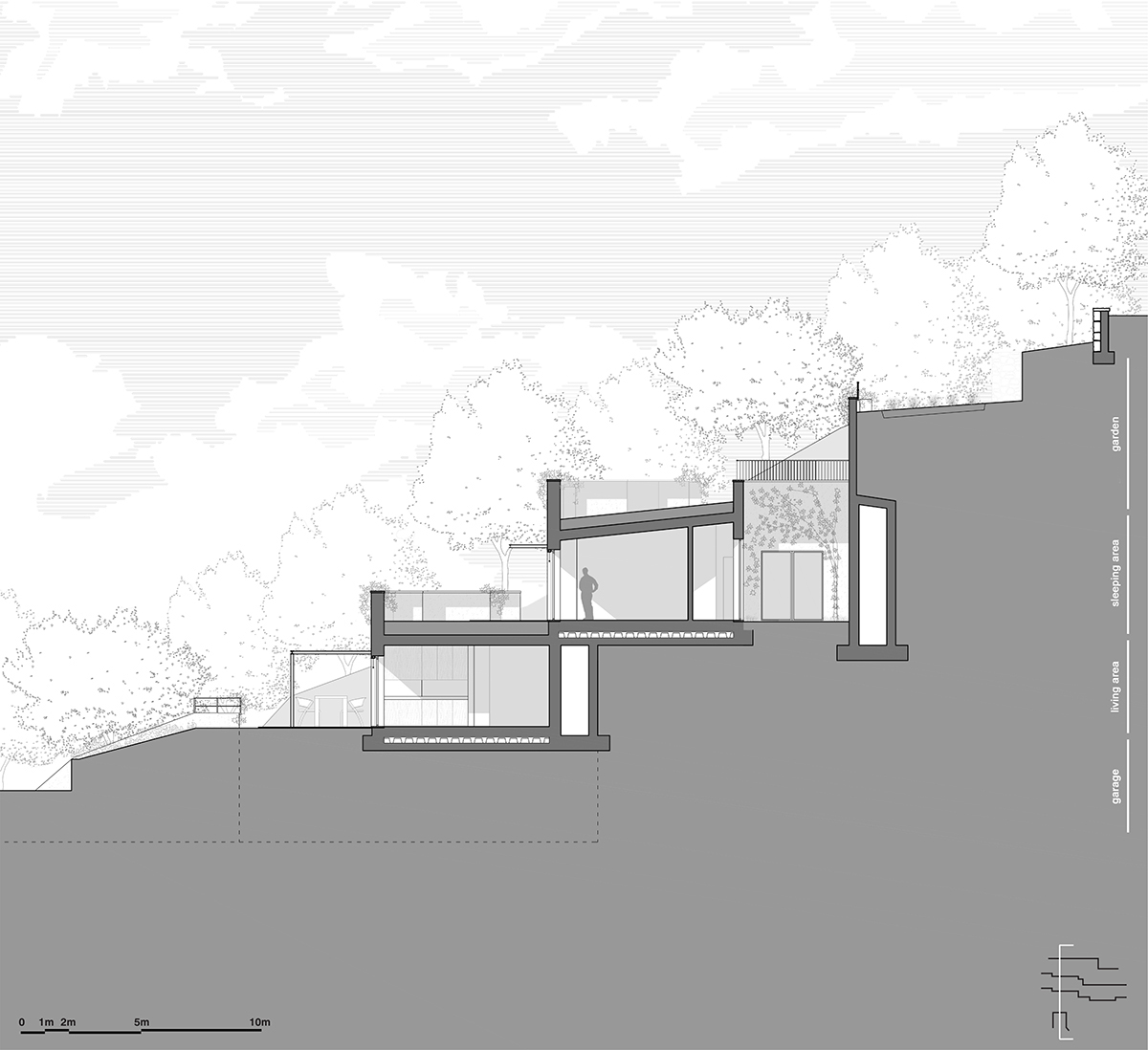
The southern-facing rooms open up to the sun with large windows that allow you to exploit the direct light in the winter months when the sun is lower. In the summer months, when the sun is higher, the presence of Pompeii and/or pergolas with adjustable slats creates a condition of filtered and indirect light. The openings are well protected in the shade, avoiding the greenhouse effect that could overheat the interior spaces. The internal distribution was regulated and studied as a function of this unique open southernly front. Therefore, the main living spaces are also south facing (specifically the level 2 living room, kitchen, and level 3 bedrooms). In contrast, the northern spaces were made used for likes as the laundry room and bathrooms. The latter are ventilated and illuminated by automatic Velux style skylights with an opening of a fixed size of 100×80 cm that meets or exceeds the parameters of the enlightening law.
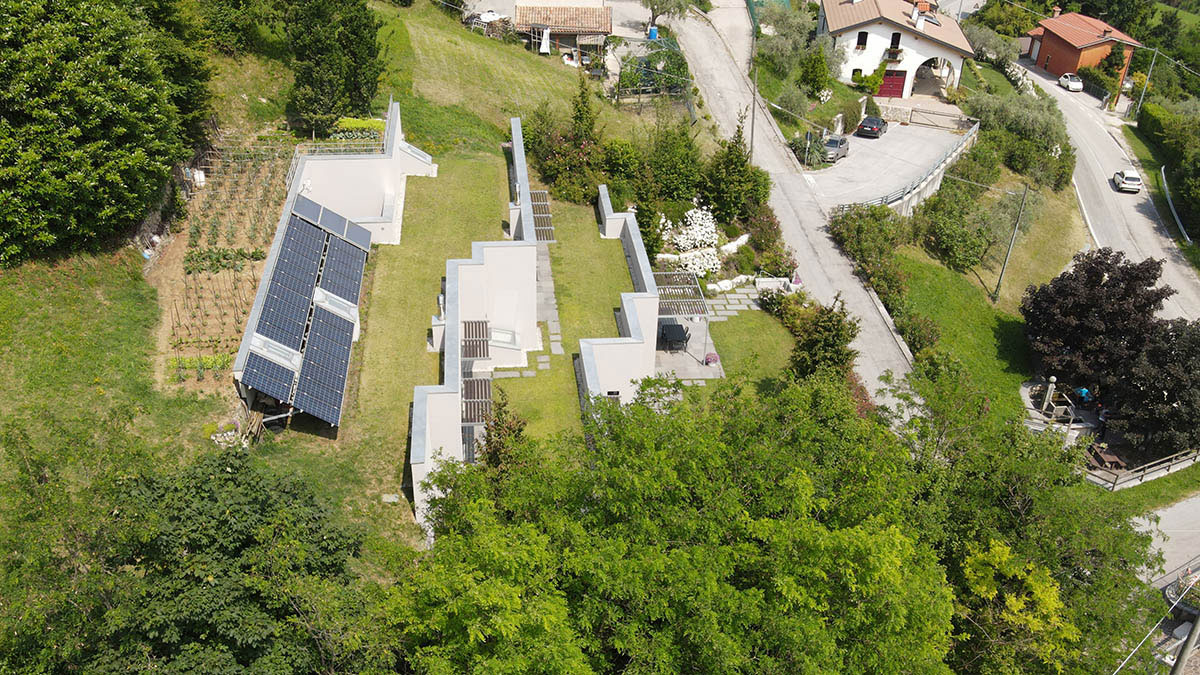
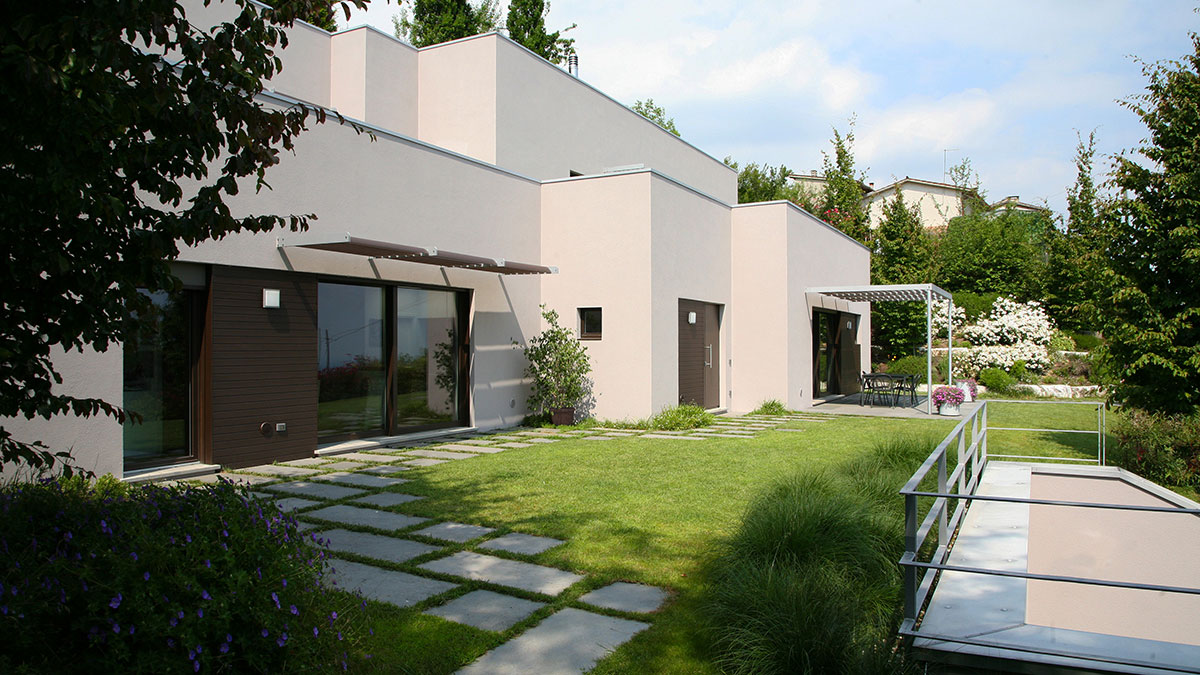

The building is further distinguished by its use in the living space, the size openings well above the minimum requirements of building regulations allowing the house to be very bright despite the semi-underground state. Particular attention is paid to the use of renewable sources; therefore, in the coverage of the last level were placed 24 photovoltaic panels and 3 solar panels. The total electricity production is 6.0 kWp. The hot water produced with solar panels is collected in a storage tank with a capacity of 600 liters.

